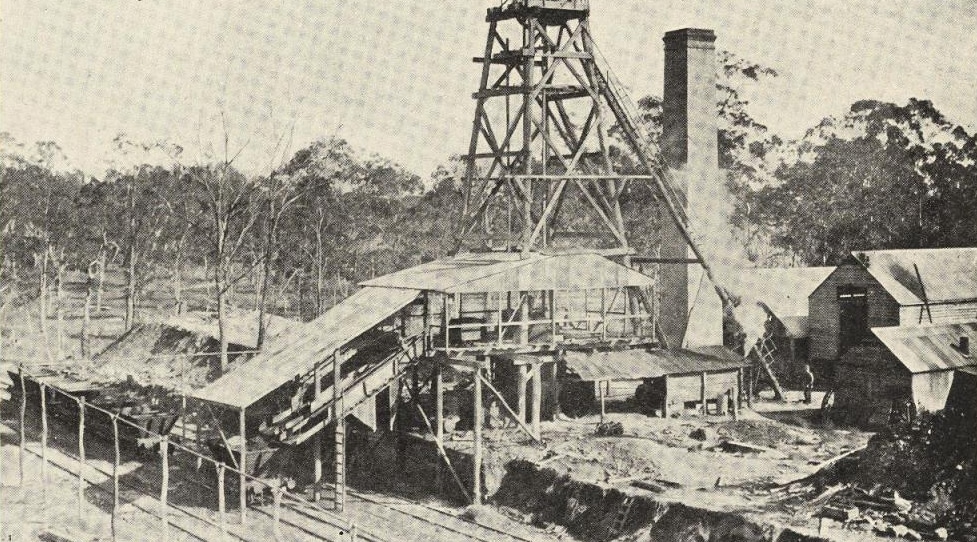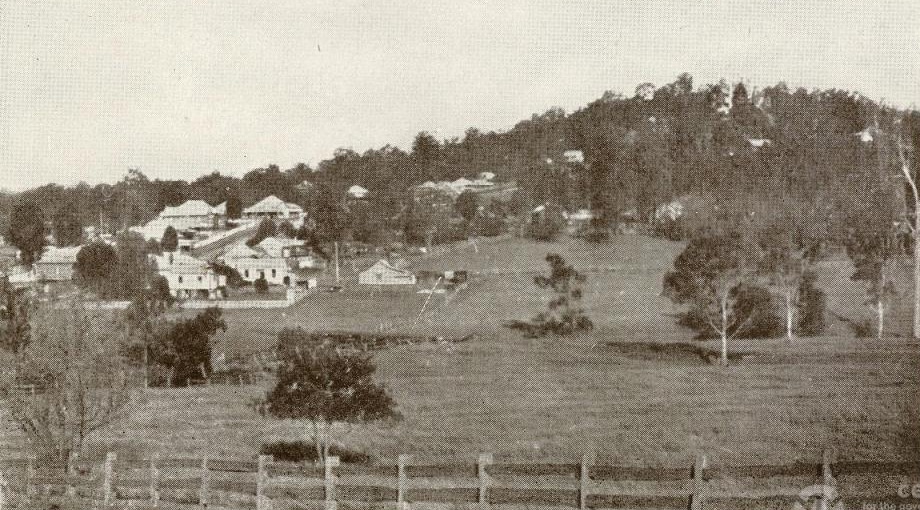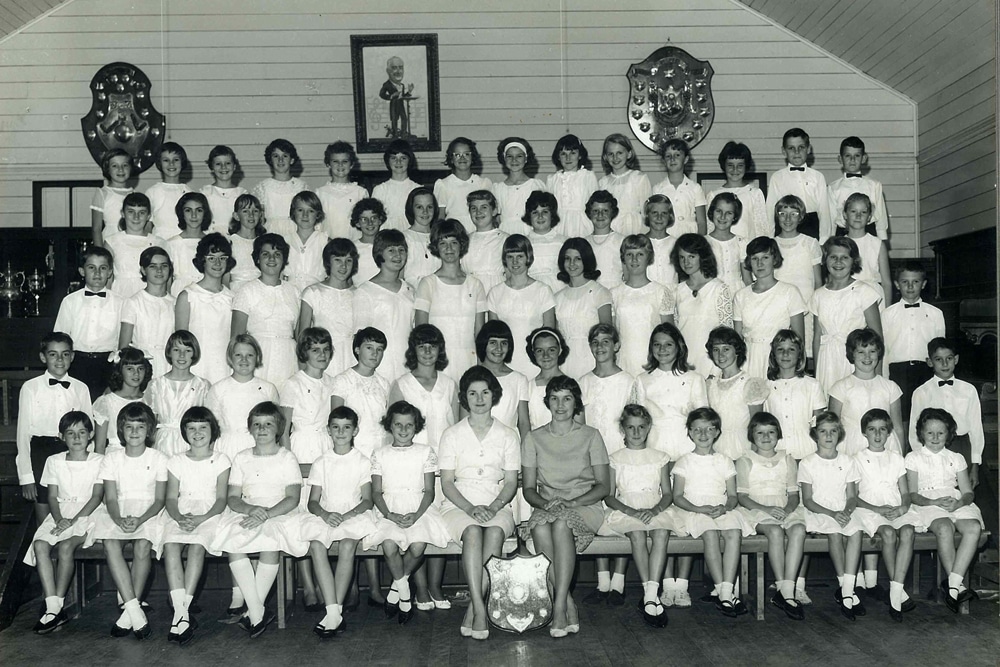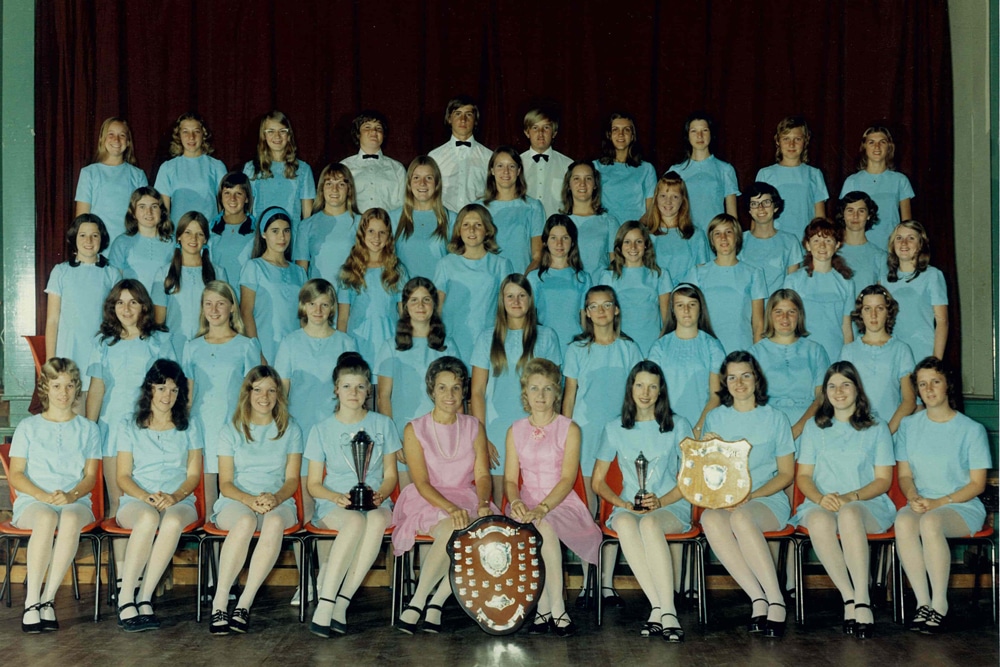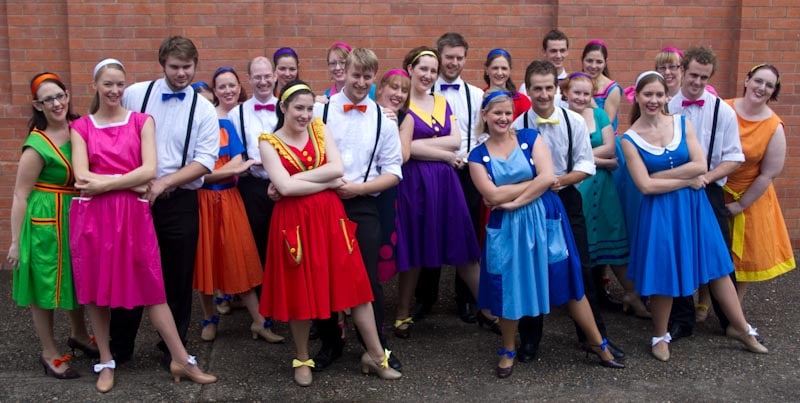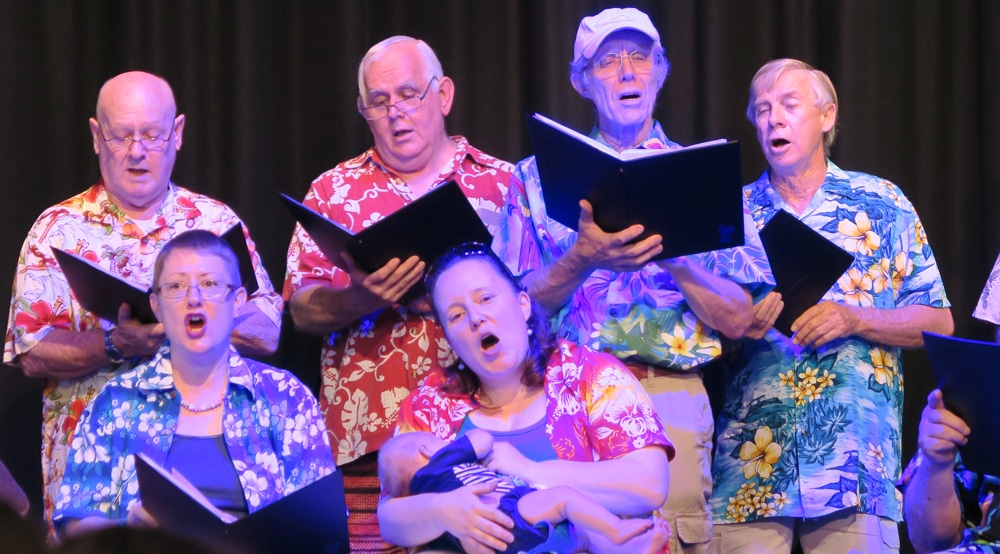Images: Early Blackstone, Lewis Thomas, Aberdare Extended Mine
The Welsh Community at Blackstone
The history of the Blackstone-Ipswich Cambrian Choir is interwoven with that of the early Welsh miners in the Ipswich area during the late 1800s, the United Welsh Church and the ‘Coal King’ Lewis Thomas.
Welsh-born Thomas was among the early arrivals in the Ipswich area. He arrived in 1859 and, after working for a short time on railway construction, went into partnership in a coal mine. He later bought out his partner and in 1866, began to mine the rich Aberdare seam of coal at Blackstone. His presence attracted Welsh miners and a significant Welsh community began to establish itself. In 1883 a group of young men arrived from Blaenau Ffestiniog in North Wales and, together with others from the coal mining districs of South Wales, started work for Lewis Thomas. This community established a United Welsh Church, which met initially in a church hall in Newton, some distance from Blackstone.
Realising that the Newtown location was inconvenient, Lewis Thomas offered the use of a cottage at Blackstone and, when that became too small, he donated land and a church was built and opened in 1886. The church still stands at Blackstone today. The Welsh community at Blackstone continued to grow and to hold dearly onto their Welsh traditions, including their love of singing.
The Choir’s Early Days
Whilst the earliest records of the Choir prior to 1908 have been lost, all articles and histories written in the early years agree on one basic fact: the choir which was to become known as the Blackstone-Ipswich Cambrian Choir was formed in Blackstone in 1886.
In September 1886, it was announced that an eisteddfod was to be held in the Welsh Church on New Year’s Day 1887. Two Blackstone choirs competed in the Chief Chorus with the winning choir being one conducted by Thomas Howells. This successful first eisteddfod proved to be the catalyst needed to fuse the Welsh singers of Blackstone into stable and permanent choral society. Although records are sketchy, evidence can be found that the choir, under various names, continued to compete successfully in eisteddfodau in both Ipswich and Brisbane under the direction of both Thomas Howells and James Scourfield.
At the Brisbane Eisteddfod of 1890, a choir termed the Blackstone and Ipswich Cambrian Choral Union competed under the direction of Thomas Howells. It appears to have been a combination of two choirs conducted by Howells – the Blackstone United Choir and the Ipswich Philharmonic Choir. From 1891 onwards the choir was referred to variously as the Blackstone Cambrian Choir, the Blackstone and Ipswich Cambrian Choir or the Ipswich and Blackstone Cambrian Choir, depending on which newspaper was being quoted.
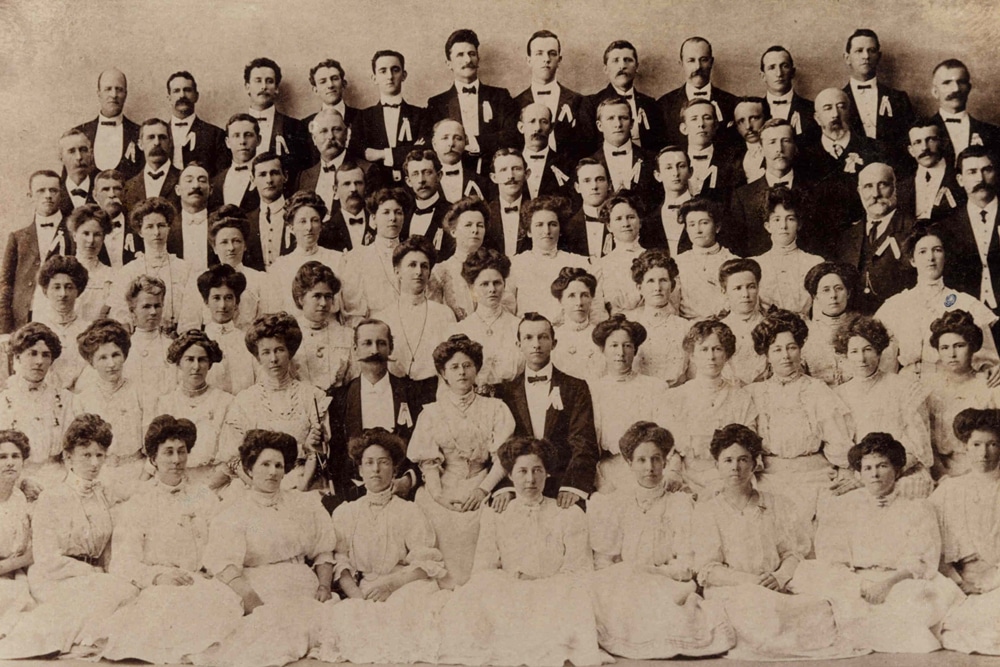
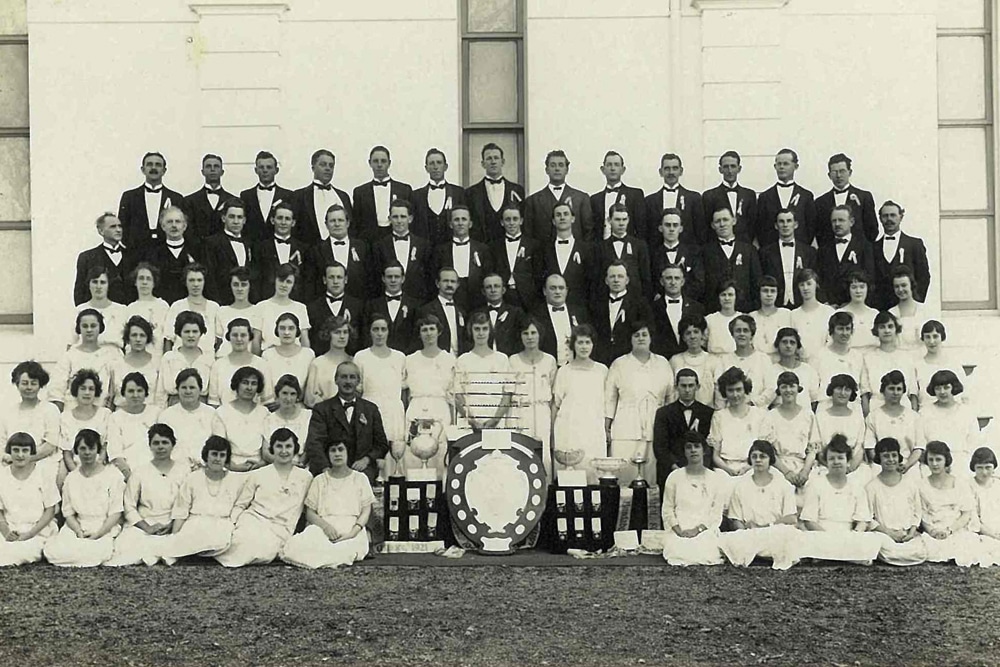
The Leonard Francis Years: 1907-1947
In 1907 the legendary Leonard Francis was appointed conductor, and for fourty years he led the choir to success after success in the annual eisteddfodau.
In 1908 the choir travelled by steam ship to the Royal South Street competitions in Ballarat and returned as the champion choir of Australia. Two years later, it again travelled by sea to contest the Commonwealth Eisteddfod in Sydney and was again champion choir. The Cambrians had established their famous reputation.
Francis found the last few years of his conductorship difficult. The Great Depression and the onset of World War II saw the choir struggling to maintain support and numbers, especially from the men.
Leonard Francis died at the age of 80 on Easter Sunday, 1947, having conducted the choir until shortly before his death.
The Difficult Years: 1947-1970
After the death of Francis in 1947, the choir continued to endure difficult times as membership fell. Times were changing. The motor car had opened up new horizons; radio made music much more available; motion pictures had made concerts seem rather tame; and then television arrived, seeming to spell the death knell of live entertainment and even the cinema.
But the Cambrians survived these long, difficult years through the hard work of its gifted conductors and by expanding its range of operations to include the production of annual musicals. The first of these, in 1952, was Pirates of Penzance. Both the membership and audience numbers rose again.
Conductors Lyla McGuire, Nancy Jones and Bryan Capern (a third generation Cambrian) led the choir through the difficult years and achieved some significant eisteddfod victories in sections available to smaller choirs.
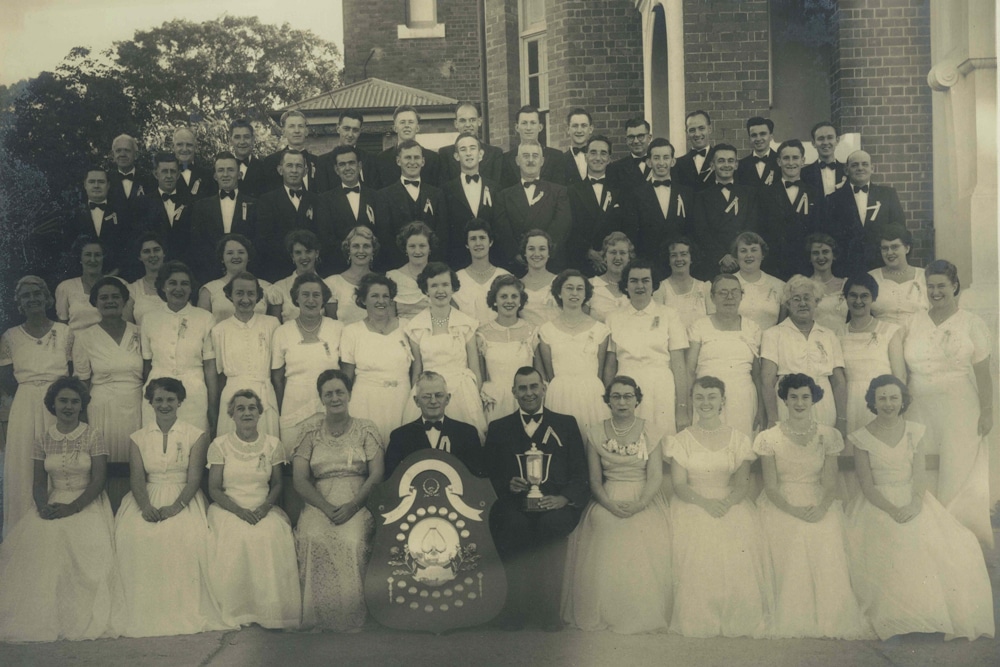

A New Era
By the 1970s, there seemed to be a rediscovery of the pleasures of choral singing and the numbers began to build up again.
In 1974, Blodwyn Whitehead (nee Edmunds), an Ipswich teacher of music, took over as conductor. She was the fourth generation of her family to belong to the choir. A male choir again made an appearance at the 1975 eisteddfod and by 1976 the choir was again competing across a full range of items in the Queensland Eisteddfod.
More recent conductors have included Dr Guy Jansen, Dr Christopher Kiver, Sandra Milliken, with the choir currently being conducted by David Webster.
The Junior Cambrian Choir
An early attempt to establish a junior choir was made in 1931 when assistant conductor Warrie Hurford formed The Cambreens with pianist Joan Vincent. Mr Hurford was not in good health, and was not able to continue the group for long.
A Junior Cambrian Choir was again formed in 1947 by conductor Lyla McGuire with pianist Kathleen Gee. The choir was a success from the beginning, winning many awards at the Ipswich Junior Eisteddfod. They soon had 120 members but, unfortunately, this choir lapsed in 1959 for a period of six years.
The Junior Cambrian Choir (for 8 to 16 year olds) was reformed in 1965 with Blodwyn Whitehead as conductor and Valerie Hucker as accompanist. Within a few years the membership had grown to over 100 voices. In the late 1960s the Juniors were asked to sing at Cribb and Foote at Christmastime, the beginning of a tradition that lasted for many years.
The Junior Cambrian Choir is now conducted by Michelle French and accompanied by Bronwyn French.

The Cambrian Youth Choir
The Cambrian Youth Choir was formed in 1969. It was established out of a percieved need to provide a greater musical challenge for the older members of the Junior Cambrian Choir and to provide an opportunity for young singers attending secondary school to continue their choral music experience prior to qualifying for membership of the Senior Choir.
Blodwyn Whitehead (OAM, ATCL) was appointed conductor of the Youth Choir and their first accompanist was Therese O’Brien, a school music specialist.
The first performance by the Youth Choir was at the Queensland Eisteddfod held in Ipswich during Easter 1970. On that occasion, adjudicator Patrick Thomas commented that ‘the performance standard of the set works was of world class’. Since then, the choir has never missed competing at the Queensland Eisteddfod and, on most occasions, has been awarded Champion Youth Choir in the junior choral, intermediate choral, modern chorus and theatre competition sections.
With an established reputation for choral excellence, the choir was invited by the Australian Broadcasting Commission to record a series of half-hour programs, broadcast nationally, on choral music. As guest artists for the ABC, the choir performed the Australian composition “A Dozen of Dennis” with the Queensland Symphony Orchestra under the baton of Werner Andreas Albert.
The choir has represented Australia in a world-wide radio competition for young people’s choirs; performed at the first Australian National Choral Festival in Hobart; and competed in the Australian National Eisteddfod in Canberra.
In 1996, after 27 years with the choir, Blodwyn Whitehead resigned her position as conductor to travel overseas. Her place in the Youth Choir was taken over by Berniece Hicks, with accompanist Bronwyn French. Bernice continued in the position until the end of 2012.
The Cambrian Show Choir & Coro Concorde
In 2009, a group of younger members of the Senior Choir proposed the establishment of a Show Choir within the Cambrian organisation. Their vision was the creation of an ensemble that would provide younger singers with the opportunity to perform a variety of fresh, popular music. The proposal was approved and the Cambrian Show Choir commenced rehearsals in 2010. The Choir functions as an integral part of the Senior Choir, drawing its members (aged 18 to 45) from within that group. It aims to be a collaborative choir, with members having input into song choice, costuming, choreography and direction.
The most recent addition to the ensembles making up the Cambrian Choir organisation has been the creation of Coro Concorde – the Harmony Choir. Established by Sandra Milliken in 2013, Coro Concorde rehearses on Wednesday mornings from just after Easter each year through until the end of November. It is designed to encourage current and past members of BICC who are unable to, or find it difficult to, attend night rehearsals of the Senior Choir to maintain their interest and participation in choral music rehearsal and performance.

